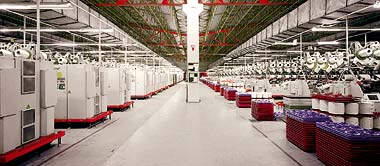
[ up
]

The author looks into the twisting future. In his opinion twisting of yarns will maintain its position and offer opportunities for textile manufacturers and machinery suppliers. Twisting is spinning refinement, one fifth of all textile yarns undergo twisting and for industrial yarns the share is nearly 50%. Compared to single yarns, twisted yarns have many advantages, such as higher uniformity, greater strength, improved elasticity, more volume, better wear resistance and lower number of spot defects.
In the more distant future the role of twisting both for continuous filament and short-staple spun yarns from chemical fibres may be reconsidered in view of then available techniques. For the growing home furnishing textile market, twisted yarns will maintain their dominating position due to high wear resistance and good appearance retention. For industrial yarns twisting will remain undisputed for most applications, strength and other properties require unique fibre configuration of the yarn, imparted only by twisting.
It will be a challenge for machinery manufacturers to provide solutions and open new applications and markets. Recent examples are the introduction of direct cabling for industrial yarns and the expansion of covered elastane yarns. In response to imminent requirements one ITMA '99 exhibit called "TrendTwister" from Volkmann presented a package of very modern tools for efficient, quality conscious, and versatile twisting by tomorrow's users.
Article by Dr. Rainer Lorenz, Lorenz TexResearch GmbH, Nettetal, Germany
Copyright © 2005 state: 17. April 2011